Moto Guzzi’s plans to celebrate its centenary last year were wrecked by Covid. But the roads around the lakeside town of Mandello del Lario in northern Italy will be crawling with bikes this September as Guzzi’s historic factory hosts a delayed party that will attract riders from all over the world.
Many of those bikes will be the transverse V-twins for which the firm is best known. And given that many riders will have come a long way, it’s a fair bet that the most common model will be the California, whose unique mix of American touring style and Italian engineering made it a mainstay of Guzzi’s range for decades.
The California’s story began in Mandello in early 1969, with an unlikely hero: Sergeant Scotty Henderson, a motorcyclist from the Los Angeles Police Department’s Traffic division. Back then, when Boeing’s new 747 jumbo jet had just made its maiden flight and the Apollo 11 crew were preparing for the first flight to the Moon, Sgt Henderson arrived at the Guzzi factory to help develop a US police version of the firm’s V7 roadster.
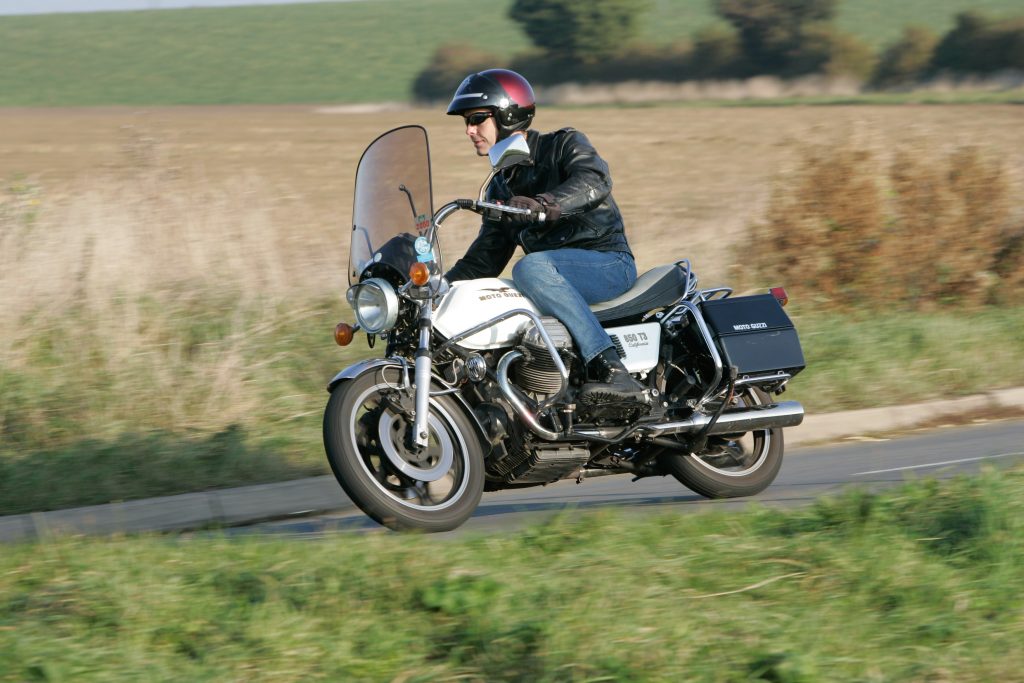
Guzzi had already increased the V-twin’s capacity from 703 to 757cc, and fitted a fairing, screen, panniers, siren and extra lights. Under Henderson’s instruction they changed the screen to bullet-proof Lexan, fitted a left-foot gearchange, and modified the sidestand so it could be used without dismounting. The collaboration was a success. By the end of the year Guzzi’s police bike had joined the regular Harley-Davidsons in the fleets not only of the LAPD but also the California Highway Patrol and several other forces.
Guzzi’s bosses were so encouraged that a year later they developed a civilian version with most of the V7 Police model’s features, apart from the bullet-proof screen. It also had wide, “bull-horn” handlebars and a thick, Harley style “buddy” seat . The V7 750 California was born, though in the US it was called the V7 Ambassador, presumably so as not to alienate riders from other states.
Several decades later, the broad buddy-type seat of a 1979-model 850 California, borrowed from Made In Italy, an Italian motorcycle specialists based in Suffolk, feels as comfy as a favourite armchair as I watch the scenery drift by at a fairly gentle cruising pace. With just a hint of wind wafting over the tall screen, and a gentle vibration coming through from a big V-twin engine down below, the Cali’s style, comfort and laid-back character make for a relaxing ride.
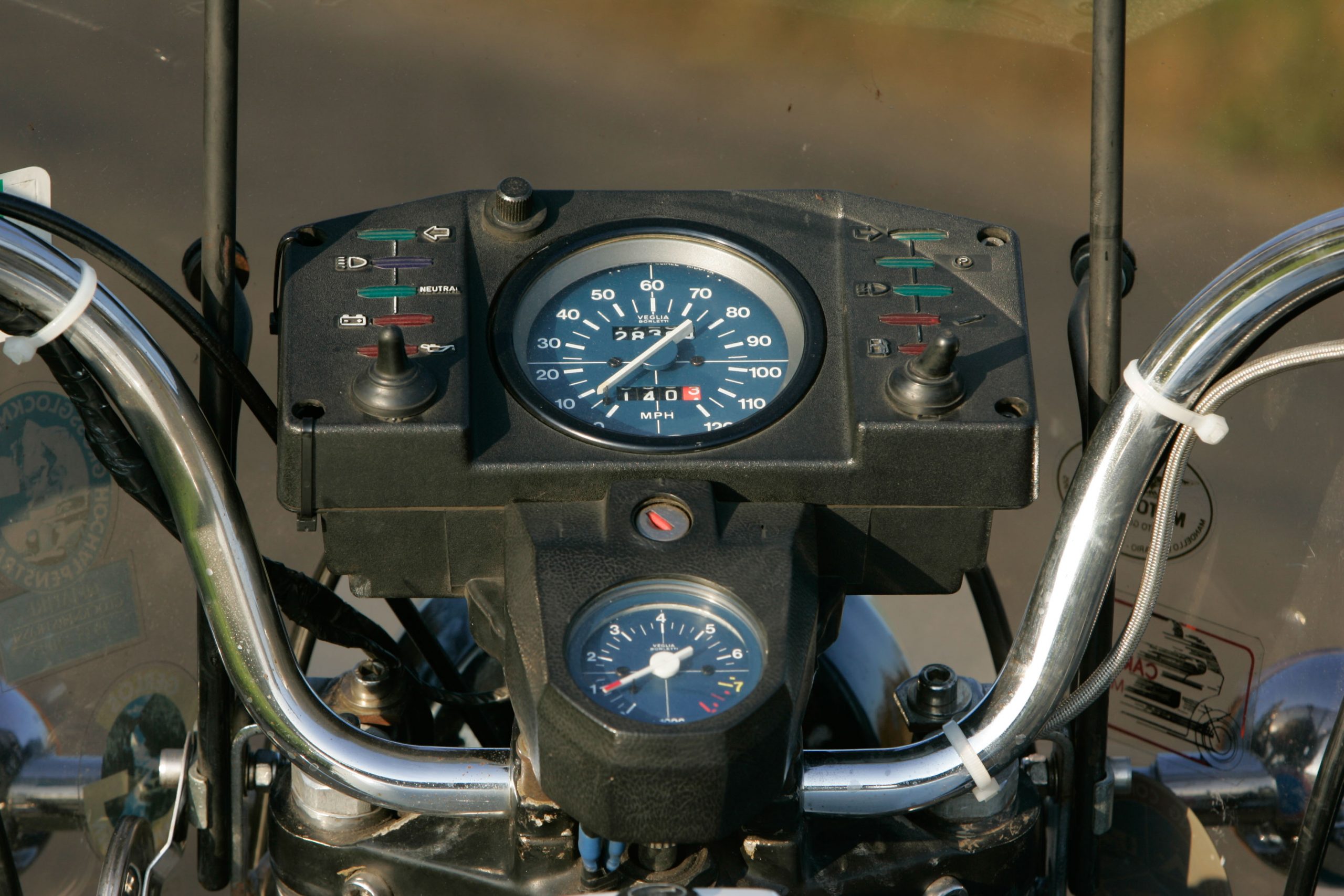
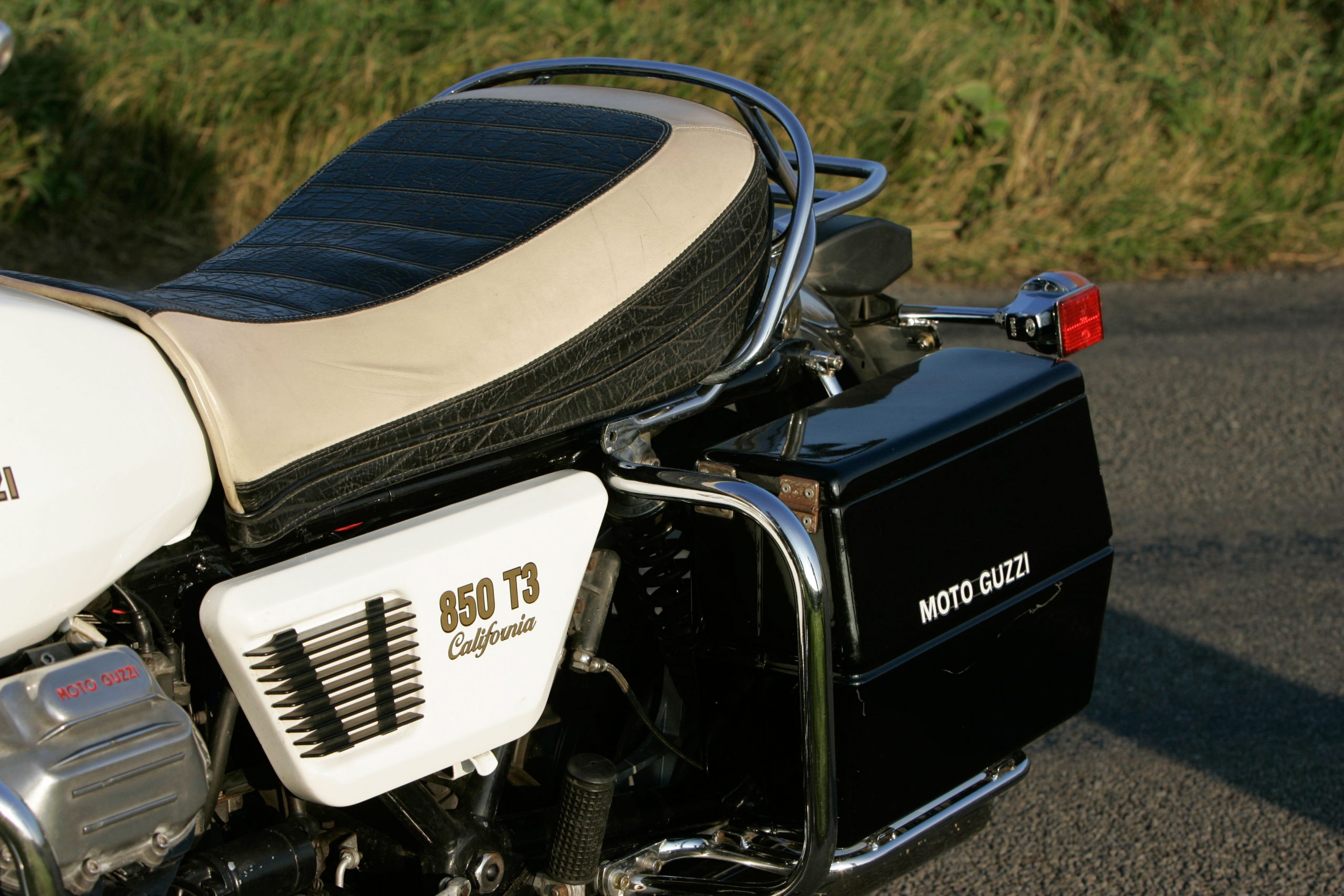
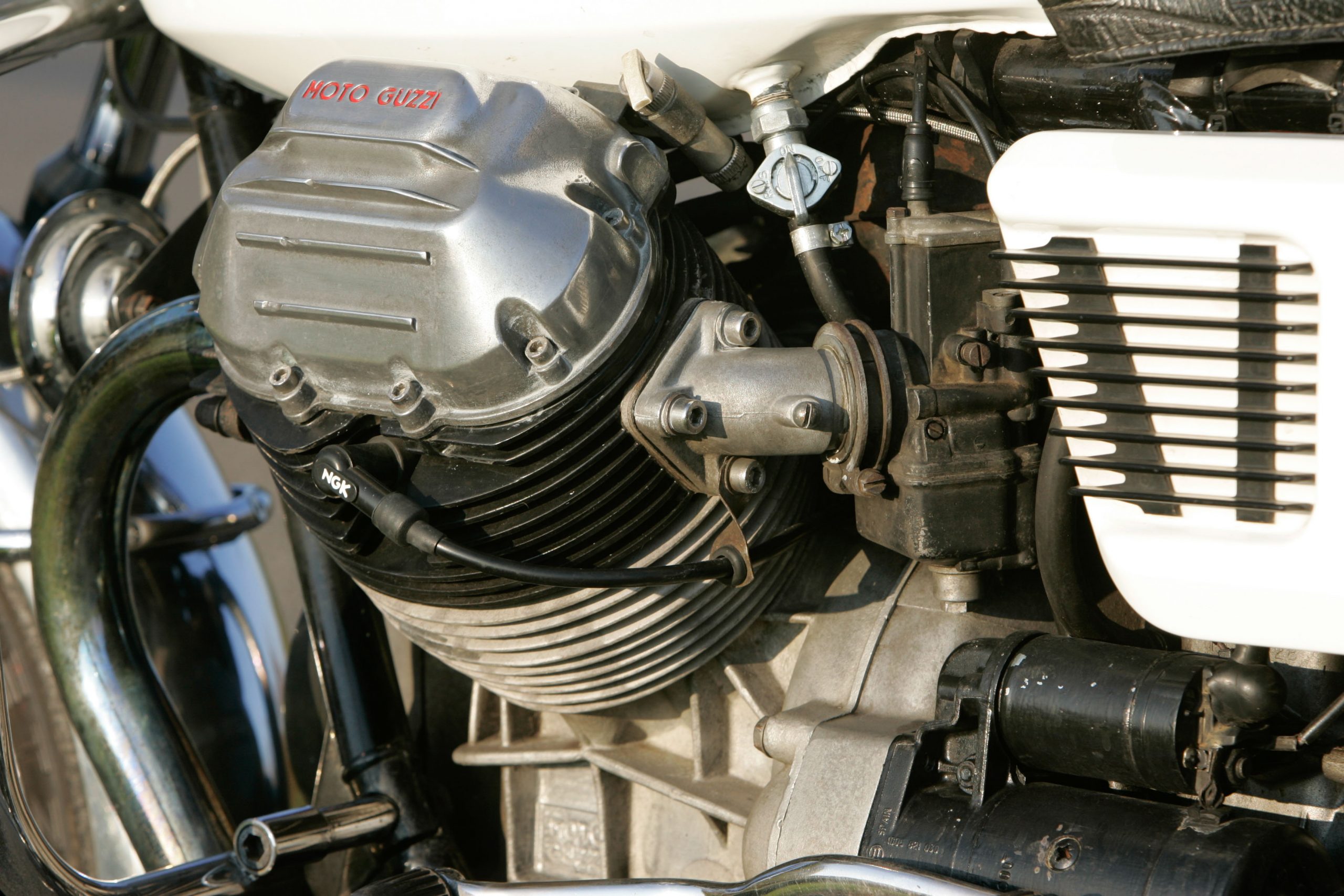
But it’s when the road gets twistier that the California really shows its hand. When a sharp turn approaches, applying the trio of linked Brembo disc brakes slows the big bike with ease. And when I nudge those wide bars to bank through a series of bends, the Guzzi responds with impressive stability and precision for such an elderly touring machine.
By the time we’re exiting the last curve with the engine revving hard and a footboard brushing the road, I’ve been reminded that the relaxed image was always slightly misleading. The California’s style might have been as American as its name, but its engineering was European. The US-Italian combination had produced a bike that was as smooth as Frank Sinatra, as versatile as Al Pacino and as tough as Sylvester Stallone.
The original Cali was an immediate success in the early Seventies. And talking of movie stars, its image was boosted when Sean Connery rode one in Diamonds Are Forever. A life-sized photo of Bond and bike was still on display just inside the main gate at Mandello when I last visited.
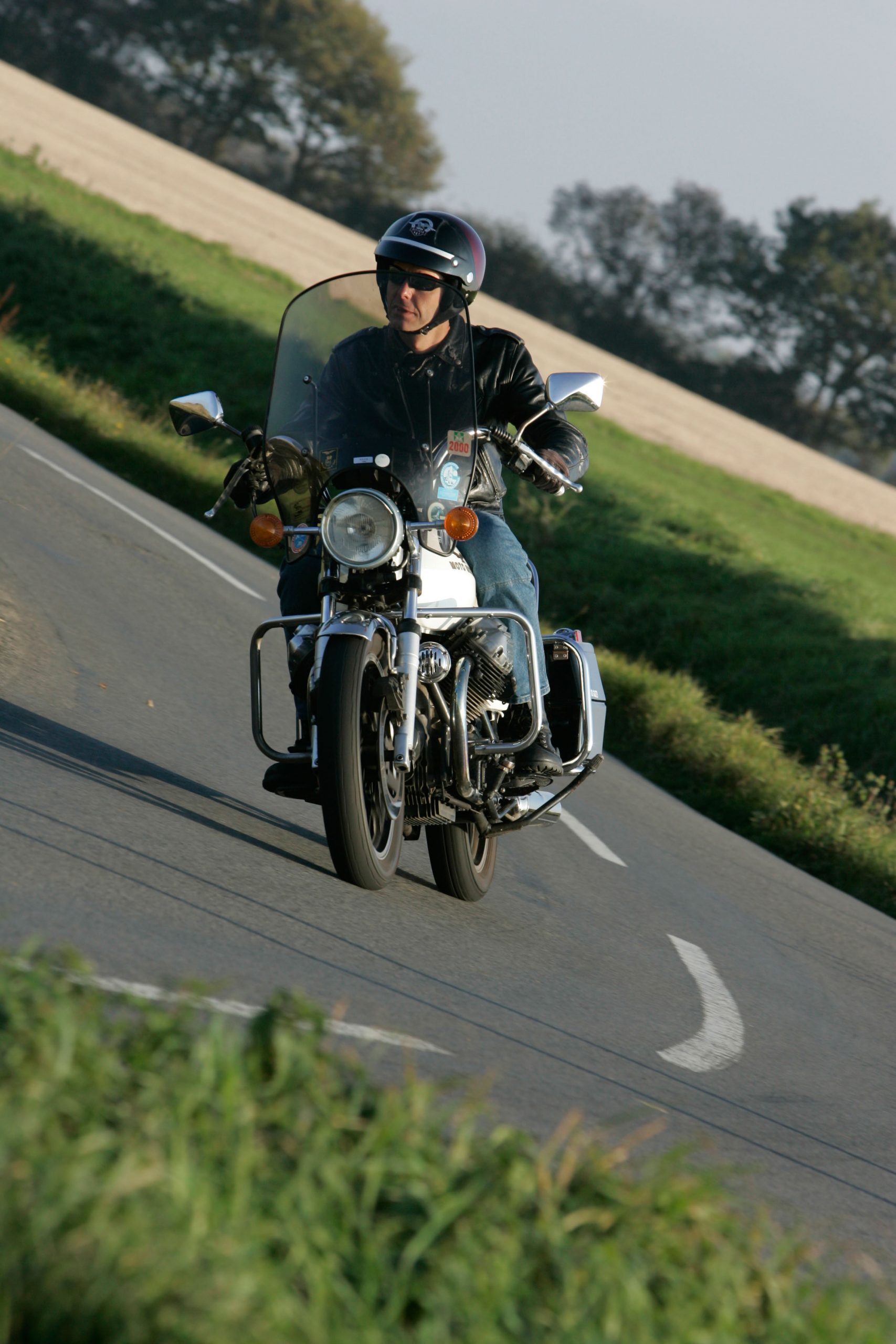
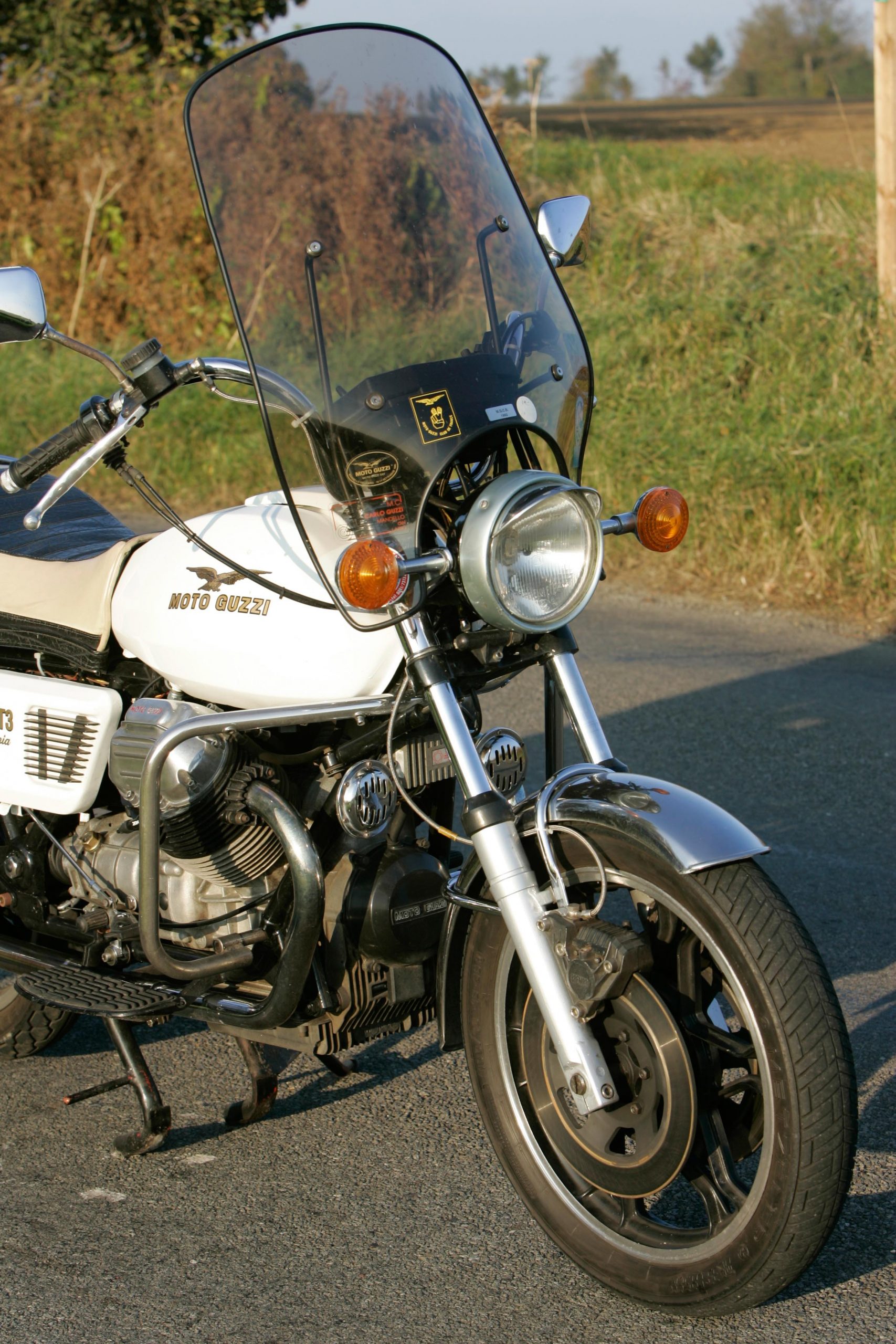
The California was upgraded several times in subsequent years, starting in 1972 when it received a bigger 844cc engine, complete with five-speed gearbox, that increased maximum output to 68bhp. By 1979, when this bike was built, the California had gained the linked, triple-disc brake system that was a notable Guzzi feature in the Seventies.
So was the way the transverse V-twin engine whoomphed into life with a torque-rock to the right from the longitudinal crankshaft. And the way it pulled away with a lumpy low-rev feel, until it suddenly smoothed out at about 3000rpm, as the tachometer needle continued spinning towards the 7000rpm yellow mark (red is 1000rpm higher, but there’s no need to rev it that hard).
On the open road, as I sat in a bubble of almost still air, the rustling of the aircooled motor audible along with the slightly hollow exhaust note from the twin silencers, it was clear why the California was held in such high regard as a tourer. The big fairing kept top speed to about 115mph, but the effective cruising speed was high, due to the screen’s efficiency. The riding position was roomy and the rider also benefited from the footboards, though a pillion got neither that luxury nor much room on the seat.
By touring standards the suspension was firm but most bumps were soaked up efficiently, and overall ride quality was good. Add to that the generous 24-litre tank, plus the low-revving motor’s respectable economy, and the result was near-200-mile range and serious long-distance ability.
Especially as the California didn’t need to slow down too much for the bends. Even this elderly bike handled very well, with a blend of sweet steering and stability that made enthusiastic cornering a pleasure. Those wide bars meant it was easy to tip into a turn, despite its weight and considerable length. And that linked Brembo system gave strong stopping too.
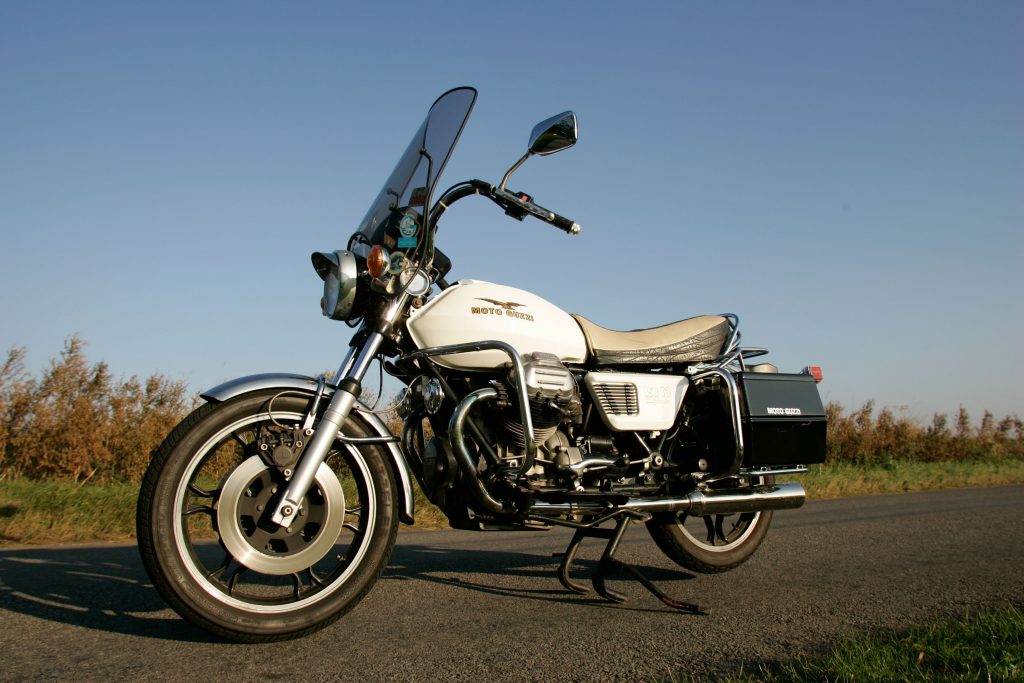
In 1981 Guzzi invested in a major redesign, creating the California II around a larger, 949cc engine. The classical styling remained until 1987 and the California III, with its more bulbous fuel tank. That model’s more sophisticated engine and chassis helped make it Guzzi’s best-selling big twin for the next few years.
A string of special editions kept the Cali in production until 2013, when Guzzi reinvented it with a new-generation California 1400, featuring some neat retro styling touches, a torquey 96bhp engine and sophisticated electronics. It was too quirky and expensive to sell in huge numbers but spawned several spin-off models before being quietly dropped a few years ago.
The California’s reputation still burns brightly, and when you ride a sweet Seventies example like this one it’s easy to understand why. In the Cali’s heyday, its unique Italian-American heritage resulted in a combination of style, performance and continent-crossing comfort that few rivals could approach.
1979 850 California
You’ll love: V-twin charm, sound handling
You’ll curse: Clonky shaft-drive transmission
Buy it because: Stateside style meets Italian class
Condition and price range: Project: £7000; Nice ride: £16,000; Showing off: £25,000
Engine: Aircooled pushrod transverse V-twin
Capacity: 844cc
Power: 68bhp @ 7000rpm
Weight: 225kg without fluids
Top speed: 115mph
Read more
50 years on, the Kawasaki Z1 is still one of the meanest motorcycles on the road
A classic British bike is one of life’s great pleasures – when it’s working
6 of the most significant motorcycle sales in 2021








